@BookcultureCCCU for Dr Claire Bartram’s ‘12 Days of CKHH Christmas’, and today we are on day three, so if you are on twitter, please do check it out, Claire will be delighted. Additionally, if you are a student aged 18 or over (no upper limit) and you would like to join the Kent Archaeological Society (KAS) and have a year’s free membership for 2021, please check out the membership form at https://kentarchaeology.org.uk/Membership_Form . This is an exciting development, as is Grace Conium’s new role as student ambassador for CCCU with KAS. You will meet Grace further down because she was at the Kent History Postgraduates Group meeting this week.
However, before I come to the Kent Postgraduates, and then a talk by Dr Peter Clark on Canterbury Archaeological Trust’s archaeological investigations of the Thanet Earth site (visible from space like the Great Wall of China), I’m going to mention the Becket Lecture again. As I said, Professor Paul Bennett (Visiting Professor of Archaeology in CKHH at CCCU) will be bringing his immense knowledge of Canterbury to give us insights into ‘Canterbury at the Time of Thomas Becket’ on Wednesday 16 December at 7pm. This online lecture using Teams is free and please save the joining url: https://teams.microsoft.com/l/meetup-join/19%3ameeting_MjkzNTM5NDItMWQ1NC00MGM3LThiZWMtMWQwYTAyODUyMmRh%40thread.v2/0?context=%7b%22Tid%22%3a%220320b2da-22dd-4dab-8c21-6e644ba14f13%22%2c%22Oid%22%3a%225438ffb7-ff66-44f6-9ccf-cf504309571b%22%2c%22IsBroadcastMeeting%22%3atrue%7d
Please click on it or copy and paste into your web browser and come and join us for what promises to be a fascinating talk. For more details about the talk and other interesting items about CKHH, check out the Centre’s webpages.
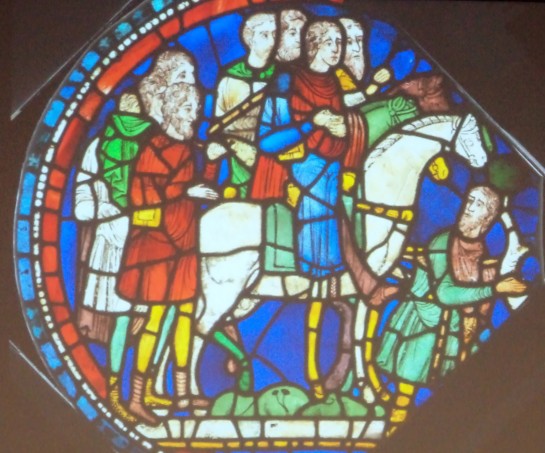
The Centre, that is Dr Diane Heath and I, also feature in Paul Carney’s first ‘Walkie Talkie’ which you can hear by checking out: https://anchor.fm/christ-church-sport–active-health/episodes/Stepping-out-en8qi4 . More on this next week because Paul has promised we can have a longer version as well to offer more material on ‘Walking the City Wall’. As you may remember when we did this a couple of Saturdays ago, we did a second Walkie Talkie from Queningate to St Martin’s church. Keeping with St Martin’s church, Claire has informed me that Danielle Horn and Rosie Sestito, two undergraduates who were working with the Rev. Mark Griffin on a project placement last year, have now had their work uploaded onto the church’s website – see the PowerPoints towards the bottom of the page: https://www.martinpaul.org/thestoryofstmartins.htm well done to all concerned!
This was a catch-up meeting for the Kent History Postgraduates, and even though Lisa, Pete and Tracey could not be with us because of work and family commitments, I had a full screen of people when I joined them having finished a seminar on poverty, charity and education in late medieval and Tudor Canterbury for the Taught MA students.
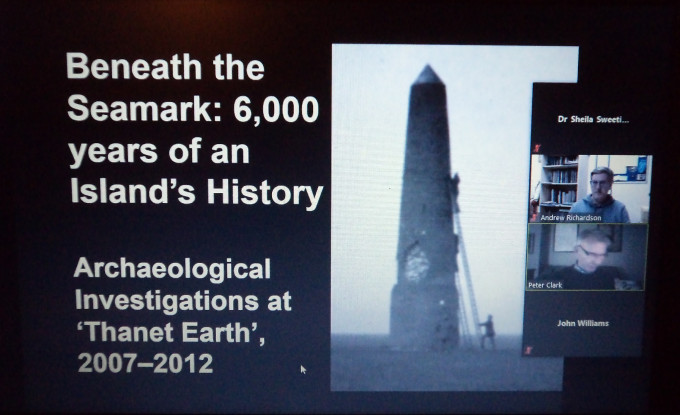
So to begin, I thought I would start with some brilliant news from Dr Lily Hawker-Yates who from February will be teaching archaeology short courses at Buxton for the University of Derby. As you can imagine she is very excited about the prospect! Keeping with good news, as co-organiser Dean Irwin’s ‘England’s Medieval Jewish Communities’ virtual conference now has more the 200 people who have signed up to join the presenters on 16-17 February 2021. If this sounds interesting, please do check it out at: https://www.eventbrite.co.uk/o/dr-rebecca-searby-and-dean-irwin-30954270679 . By then it will be almost 2 months after submitting his doctoral thesis – more exciting times!
At the other end of the doctoral journey Grace started her AHRC-funded project on investigating community heritage projects at east Kent coastal communities a couple of moths ago. Currently, she is finding out about the various initiatives in place, the impact they have had and are seeking to engender and how these are seen by local and national funding bodies. Thus, she is doing lots of reading, as well as undertaking all the checking required around ethics before she can think about interviewing various stakeholders and others.
As another whose research project will include some interviewing, Jacie continues to encounter difficulties as a consequence of the current national situation. Moreover, the closure of the various archives has and continues to cause problems, a feeling echoed by several others (see below). Being resourceful, Jacie is exploring another issue, the level of social control sought by the Ministries of Food and of Agriculture in their ‘Dig for Victory’ campaigns in WWII. In particular, she is focusing on how the ministries’ attempted to ‘organise’ people’s gardens and how different groups within society appear to have responded to such persuasion. This will give her ideas about emotional engagement, as well as more practical considerations relating to, for example, what and how much different types of households were able to grow.
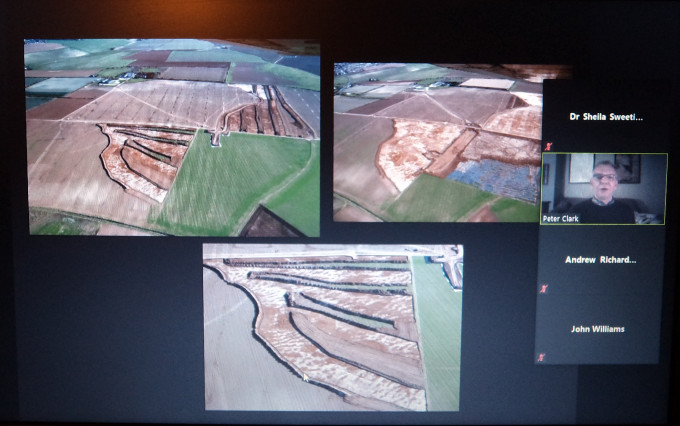
Keeping with growing, and what might be called market gardening, Janet, going back several centuries to the 13th century, is exploring the possible evidence for pear orchards in the Chislehurst area. This is part of a wider chapter on the links between Ruxley Hundred and London at this time, something that regular readers of the blog may remember from her earlier research on sheep farming and wool production in the area. Another strand to this may develop from the finding recently in Chelsfield of a papal bulla of Pope Alexander IV (1254–61). It has been posited that this may have come from a document relating to the appointment of Hugh de Mortimer as rector at Chelsfield and other local churches. From Janet’s perspective he is significant because he also held the living at Orpington, and such connections are especially interesting in terms of the political situation in the 1260s.
Going back in time even further, Richard, another new archaeology postgraduate, has just started his research project on 5th– and 6th-century Canterbury, with the intention of exploring this post-Roman landscape and how contemporaries responded to the Roman legacy. As you might expect he too is deep in the historiography as he starts to compile his literature review.
Coming back into the Middle Ages, Jane has been making excellent progress on the Culpepper family since she did her presentation a fortnight ago. She now has another 5 or 6 family wills, in its landholding the family crossing and recrossing the Kent/Sussex boundary, which is in some ways highly appropriate considering their (and Jane’s) interest in Bayham Abbey. Moreover, she has been working on Hugh Stafford, his links to Tonbridge Priory and his death on pilgrimage to the Holy Land during Richard II’s reign. These lines of enquiry have taken her to several new sources, as well as demonstrating just how helpful the national scholastic medieval community can be because she has received assistance from Drs Nicholas Karn and Paul Dryburgh.
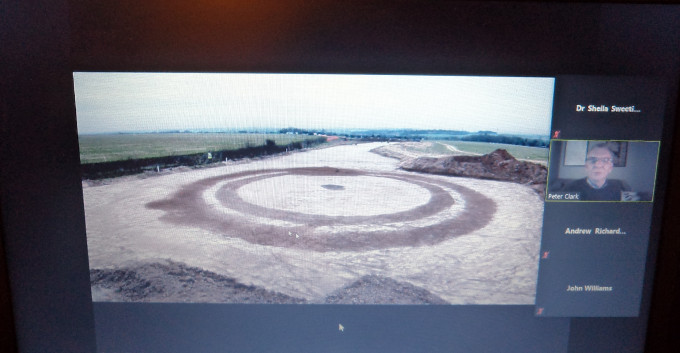
Finally, and keeping with Tonbridge, Maureen has been investigating more PCC wills, as well as those she had collected from the Kent History & Library Centre (KHLC) before it shut again. This has taken her into the early 18th century as she examines the factors that brought prosperity to several families from their small trader beginnings in late Tudor and early Stuart times. In addition, she has been working on her presentation to the group for a fortnight’s time and is now about to embark on an assessment of an early 15th-century Tonbridge rental and 2 larderers’ accounts. This brought the meeting to a close and we are looking forward next time to Maureen’s presentation, Dean’s even more outrageous Christmas jumper, the appearance of Jane’s cat, and noises off by Grace’s dog and perhaps Jacie’s dog too.
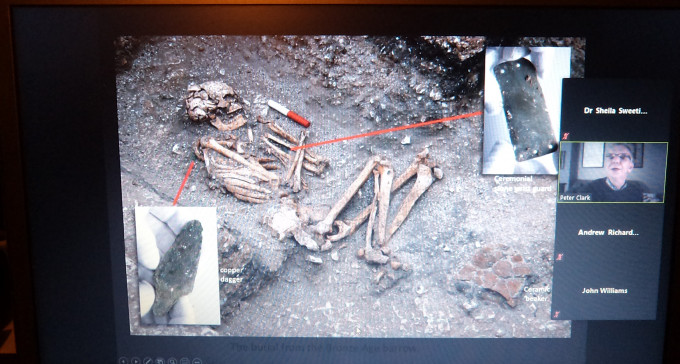
This brings me to the FCAT (Friends of Canterbury Archaeological Trust) lecture yesterday evening by Dr Peter Clark. As a pre-Roman specialist, this massive site is especially fascinating from his perspective and he provided an extremely clear assessment of this prehistoric landscape before moving on to the Trust’s findings for the Roman and later periods. Thus like Pete, for this short report I too will concentrate on the early landscape. As he said, the technical report amounts to over 500,000 words, and vast numbers of figures, plans, and photographs, and this is all freely available online.
Starting at 5000BC when Thanet was far, far greater, Pete explained that the earliest phase from the archaeological perspective is represented by Mesolithic flints, used by these hunter-gathers who seemingly came inland from the coast to clear enough of the wildwood to form sites for small camps from which they could hunt animals in the woodland. A 1000 or so years later immigrant farmers from continental Europe were apparently living alongside the native population, pits associated with these newcomers seen to contain grain, domesticated animal bone and pottery, a phenomenon seen elsewhere in south-east England. Equally the material culture of the hunter-gathers is no longer found in the archaeology, indicative, perhaps, of the mixing of cultures.
From an agricultural perspective, arable farming does not appear to have remained sustainable, instead seeing a shift towards pastoral agriculture in the form of goats, sheep and cattle, maybe a reflection in part of the type of domesticated grain brought from the Mediterranean. Indeed, as Pete pointed out, arable farming does not seem to have made a comeback on Thanet until the late Bronze Age. Moreover, by this time the wildwood had been completely cleared.
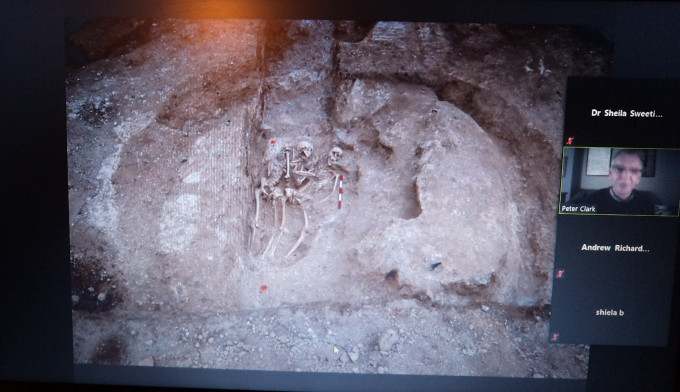
During the intervening period, the late Neolithic and early Bronze Age, the sheer number of burial mounds on Thanet points to it becoming the ‘Island of Death’. This monumental funerary landscape, with its barrows and ritual enclosures, is in part characterised as the time of the ‘Beaker People’, even though, as Pete highlighted, there are certain problems with this designation albeit beakers are a common feature in such burials. Furthermore, as well as what might be seen as the typical barrows, the archaeologists also found isolated burials and a pond barrow.
Nonetheless, during the middle Bronze Age the landscape again changed, seeing the land divided for agriculture with the establishing of field systems and drove roads. This change had considerable longevity for such farms continued through the late Bronze and early Iron Ages, but there was also seemingly a shift towards nucleated settlements. Features also seen in the late Bronze Age were large clusters of pits – for the storage of grain, but almost no houses, and only the presence of a limited number of burials.
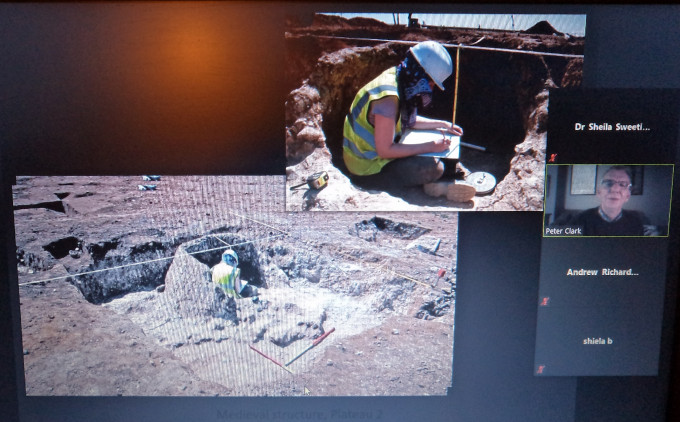
The Romano-British landscape was apparently similar, that is the presence of Roman fields and numerus burials. Nevertheless, finds from the period were exceedingly scarce, which Pete believes points to farming but not settlement, at least on the Thanet Earth site. And moving into the Anglo-Saxon period, Pete characterised it as an empty landscape, a place of farming but not residence, a scenario that changed with the coming of the Normans. However, it is worth noting that the Church had and continued to hold vast estates on Thanet from the Anglo-Saxon period right up to the Dissolution, the manorial system probably in place in some form at an early stage. Furthermore, from the documentary evidence the particularities of peasant landholding practices within this system with the presence of gavelkind and the division into sulungs would suggest the likelihood of scattered farmsteads rather than the nucleated settlements of the great open field systems of the Midlands, a pattern that fits in broad terms the findings at Thanet Earth. Not that this is indicative of disinterest by the religious houses as landlords, but that money rents instead of very heavy customary duties were the norm, as well as the opportunity for greater levels of individualism for the peasant farmers. And as part of this cultural (and legal) distinctiveness, the presence of sunken features – large ovens in these peasant buildings may be significant. Although looking at Kentish marshlands, much of this is applicable for this area too: ‘Farming the Kentish marshlands: continuity and change in the late Middle Ages’, in J.P. Bowen and A. Brown, eds, Custom and Commercialisation in English Rural Society, c.1350–c.1750: Revisiting Postan and Tawney (Hatfield, 2016), pp. 73–95.
Interestingly, these holdings were starting to be abandoned by 1250, that is long before the Black Death, but farming was not and would continue through to the present day.
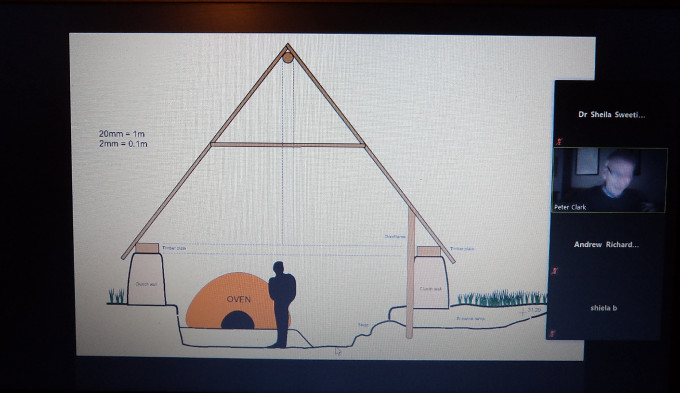
This brought Pete to his final point, the value of the seamark on Thanet, a high point in the landscape to aid navigation that had seemingly started as a barrow, and would become the site of a windmill more than once as the seamark was moved north in the 18th century. The removal of the mill to Sarre brought a wooden seamark as its replacement, it replaced in turn before a more substantial brick structure. However, this too has now gone, demolished in 1922, but its site found by the archaeologists, a fitting point to finish his fascinating talk before Pete took several questions and Dr John Williams, as chairman of FCAT, thanked him once more for such an erudite lecture.
 Centre for Kent History and Heritage
Centre for Kent History and Heritage Sheila Sweetinburgh
Sheila Sweetinburgh 1515
1515

